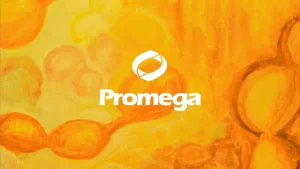Over 50 million learners rely on Duolingo every month to teach them a second language. With a simple user interface and fun-but-competitive leaderboards, Duolingo supports 40 languages across 100+ courses. Learners advance from simple vocabulary exercises to complicated sentence structures with taps and swipes on their phone.
If a learner wants to advance beyond basic proficiency, it’s helpful to understand the rules of grammar. But true proficiency in a language requires conversation, ideally with a native speaker, something not everyone has access to.
“Artificial intelligence has always been a huge part of our strategy,” says principal product manager Edwin Bodge. “We had been using it for personalizing lessons and running Duolingo English Tests. But there were gaps in a learner’s journey that we wanted to fill: conversation practice, and contextual feedback on mistakes.”

Duolingo turned to OpenAI’s GPT-4 to advance the product with two new features: Role Play, an AI conversation partner, and Explain my Answer, which breaks down the rules when you make a mistake, in a new subscription tier called Duolingo Max.
“We wanted AI-powered features that were deeply integrated into the app and leveraged the gamified aspect of Duolingo that our learners love,” says Bodge.
Duolingo engineers had tried using GPT-3 to supplement some of the human-powered features in its earlier chat feature. “It was close to being ready,” said lead engineer Bill Peterson, “but we didn’t feel it was at the point where we could confidently integrate it to handle the complex automated aspects of chats.”
Previously, Duolingo attempted to “chat” with learners through scripted conversations incorporating classic scenarios like ordering food, meeting someone for the first time, or buying a plane ticket. But Bodge says what Duolingo needed was the ability to converse with learners in niche contexts and “immersively”—to have a free-flowing conversation about basketball or the bliss of reaching the top of a mountain. GPT-4 has learned from enough public data to create a flexible back and forth for the learner.
“We wanted AI-powered features that were deeply integrated into the app and leveraged the gamified aspect of Duolingo that our learners love.”
Edwin Bodge, Principal Product Manager, Duolingo

There is a best practice in language learning called “implicit learning.” Learning through repeated use of vocabulary and grammar in an array of contexts—in other words, through practice—is more effective than memorizing rules. This posed an interesting challenge to Duolingo.
Many of Duolingo’s learners want to learn the explicit rules, and the company has tried to teach them with both pre-written Grammar Tips and artificial intelligence. Even with GPT-3, the implementation was difficult. Teaching grammar requires a specific understanding of the error and why a learner made it. One incorrect term in the explanation could teach the concept incorrectly or leave the user confused and dissatisfied.
“GPT-4 gives us far more confidence in the accuracy of AI responses in Explain my Answer,” says Peterson.
With the new features, earners will be able to click “Explain my answer”, and GPT-4 will give an initial response. From there, the learner can return to the lesson, or get further explanation, and GPT-4 can dynamically update. Duolingo will gauge the quality of GPT-4’s responses by how deep the learner needs to go before returning to the lesson.

The team sees the potential with GPT-4 to provide a more effective and engaging learning experience than ever before, which should improve learning outcomes. In addition, Peterson says the ease of experimenting with GPT-4 has simplified the entire engineering process.
“Within a day we were able to build a prototype that convinced us this was something we wanted to explore more. It gets us from zero-to-ninety-five percent very quickly. Then we can work manually, hand tuning data to get the last five percent,” he says.
Now his team focuses more on testing and honing data sets.
“It’s definitely changed our engineering process internally. And the features we’ve put together have come out faster than they would have before GPT-4.”
Bill Peterson, Lead Engineer, Duolingo
Duolingo Max is available to users today. For now, Duolingo is using these new features in Spanish and French, with plans to expand to more languages and introduce new features that will keep them at the forefront of language learning.




